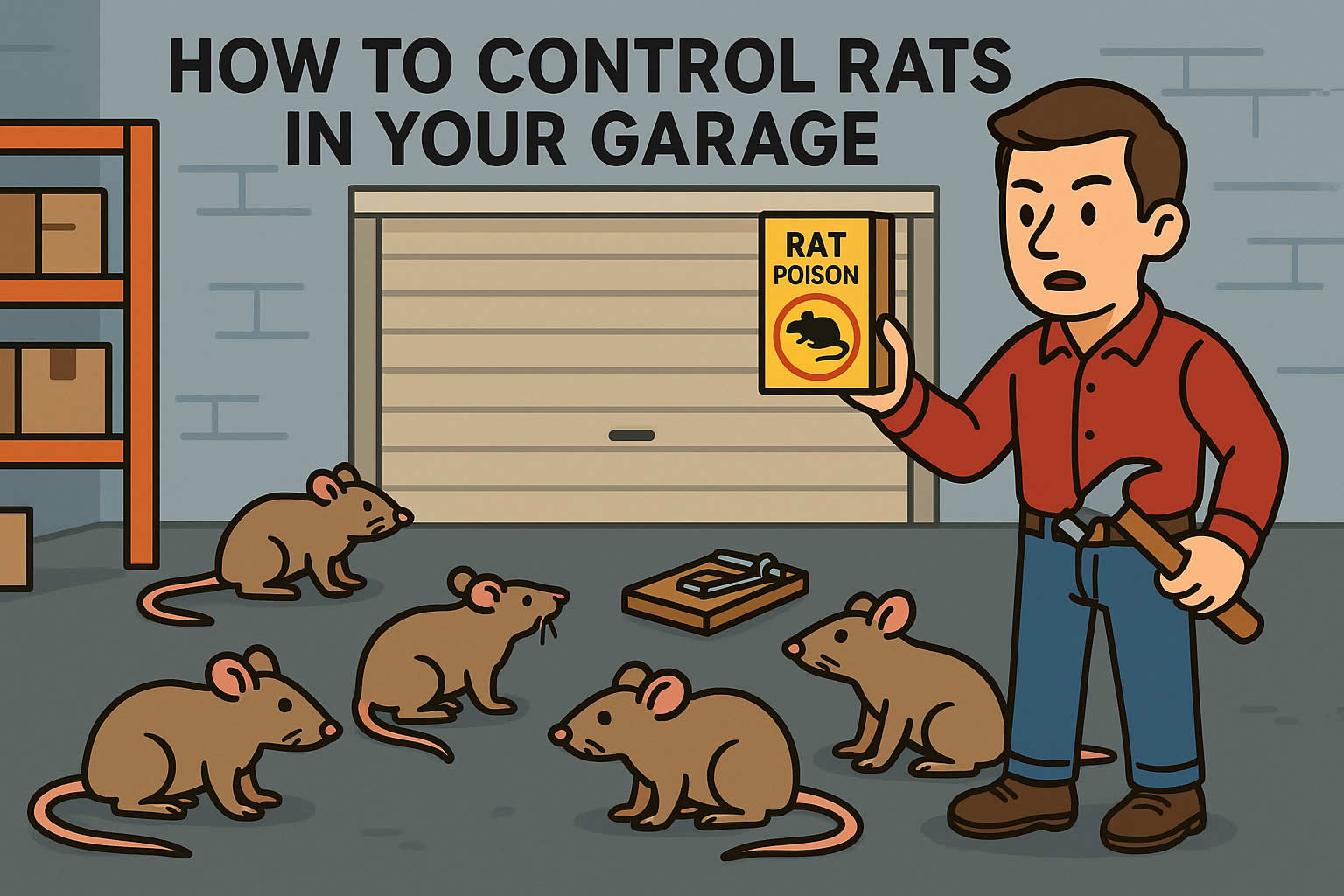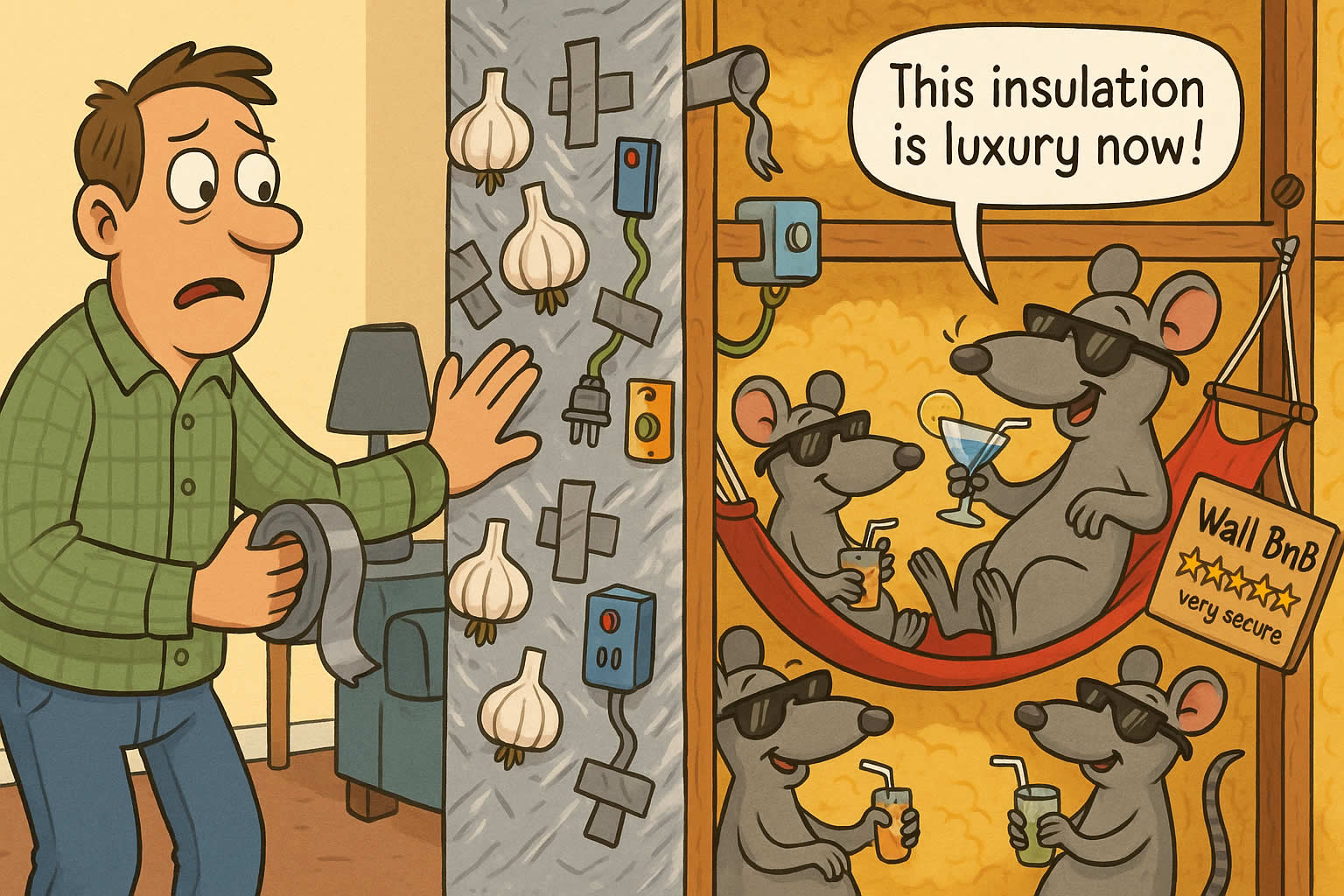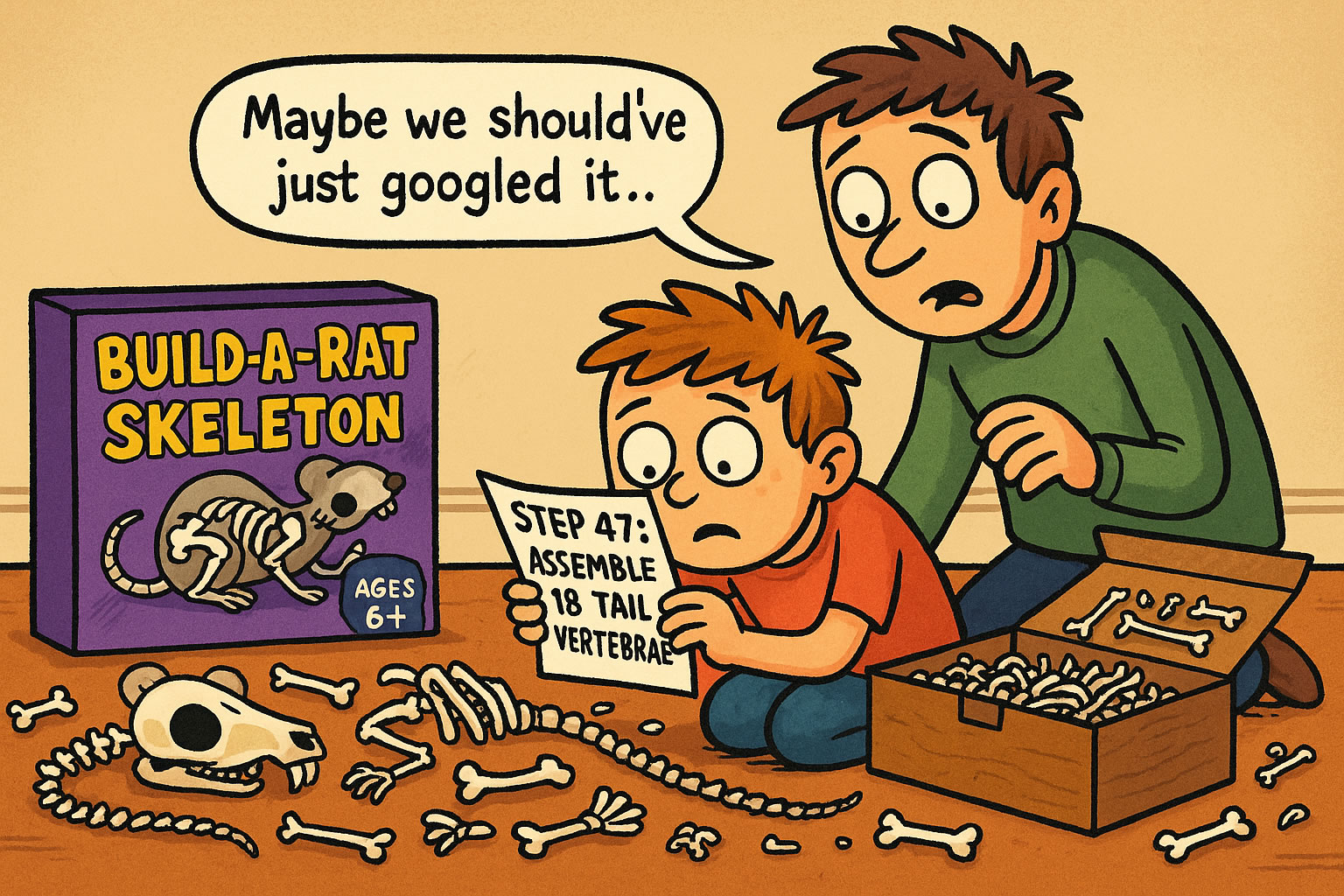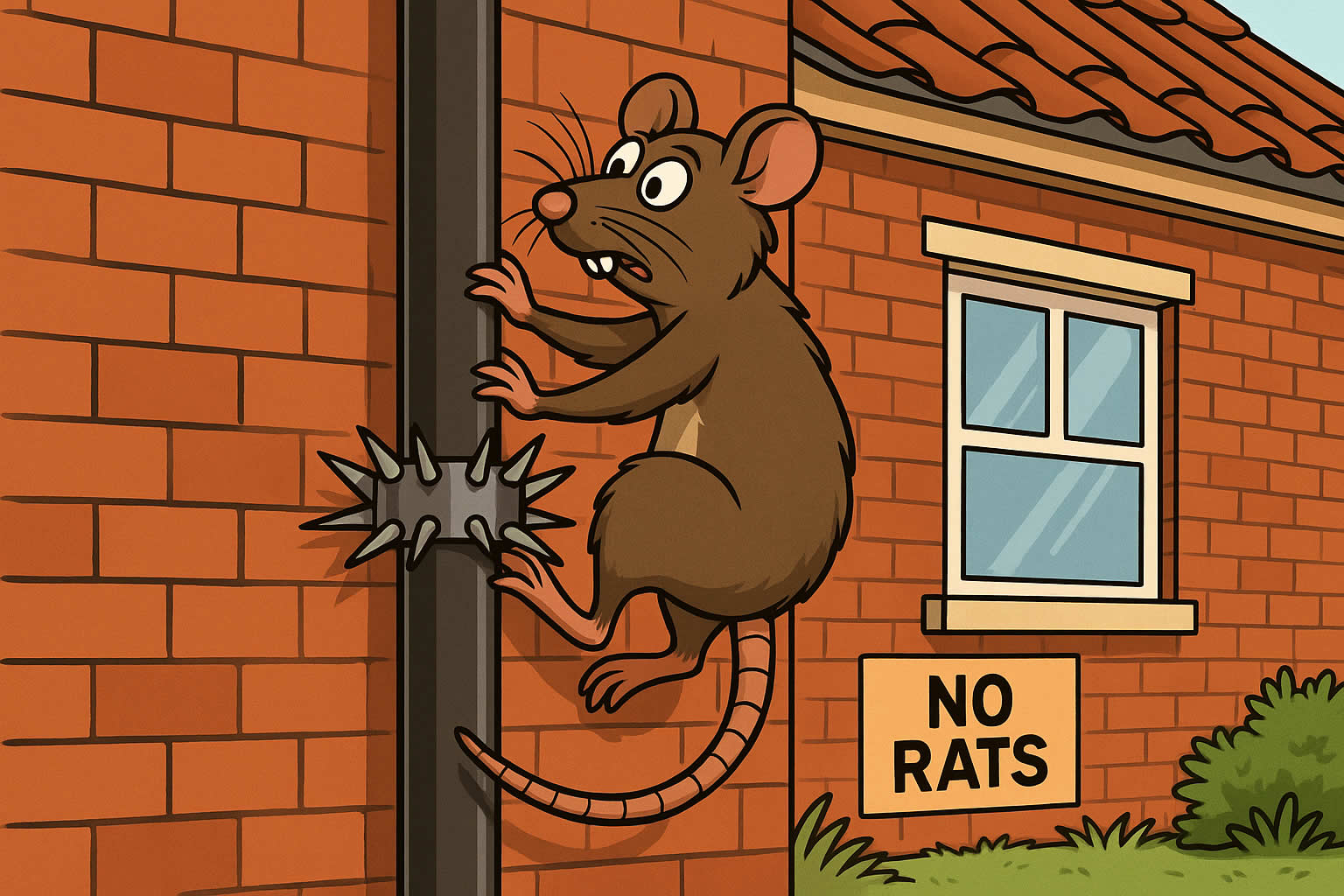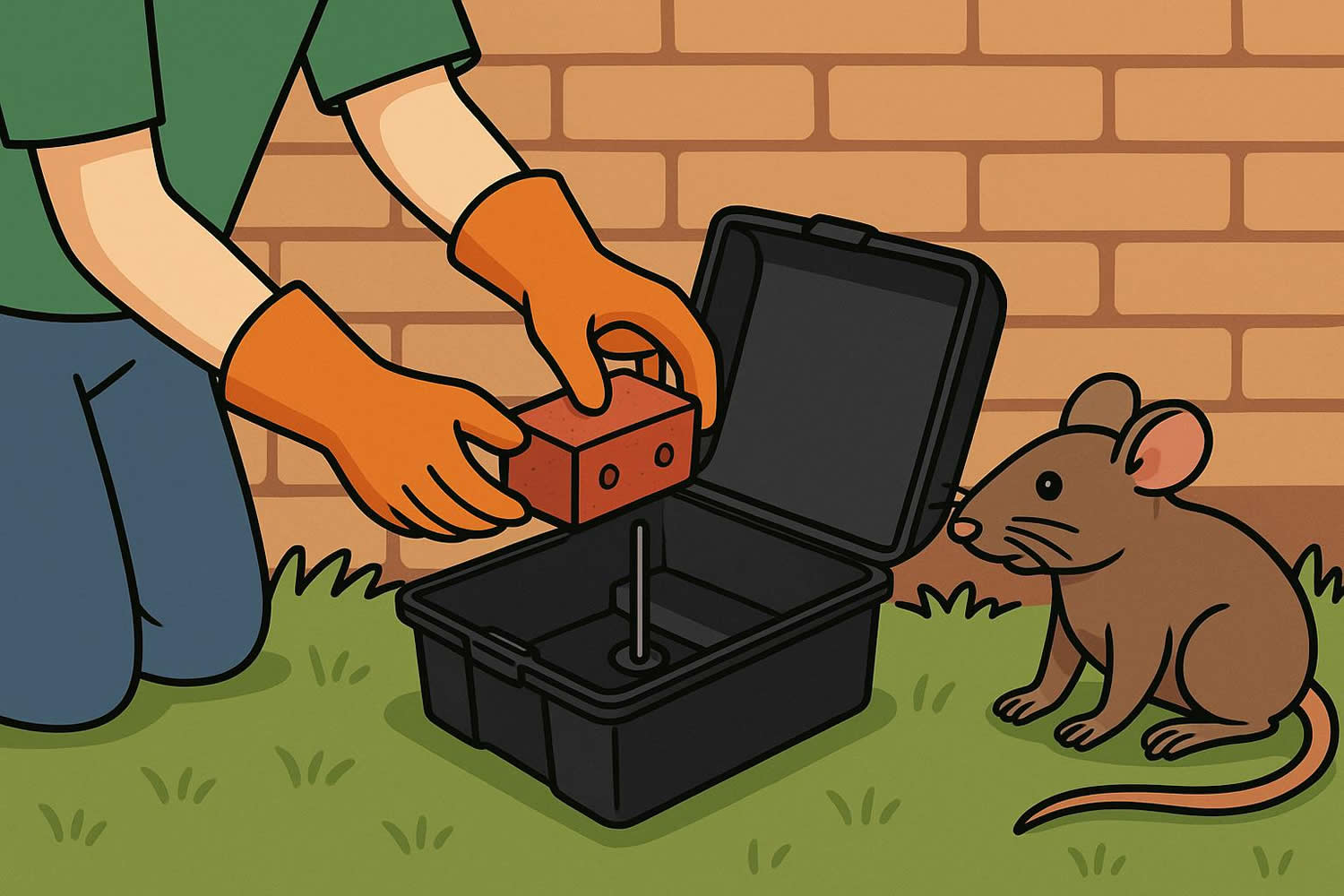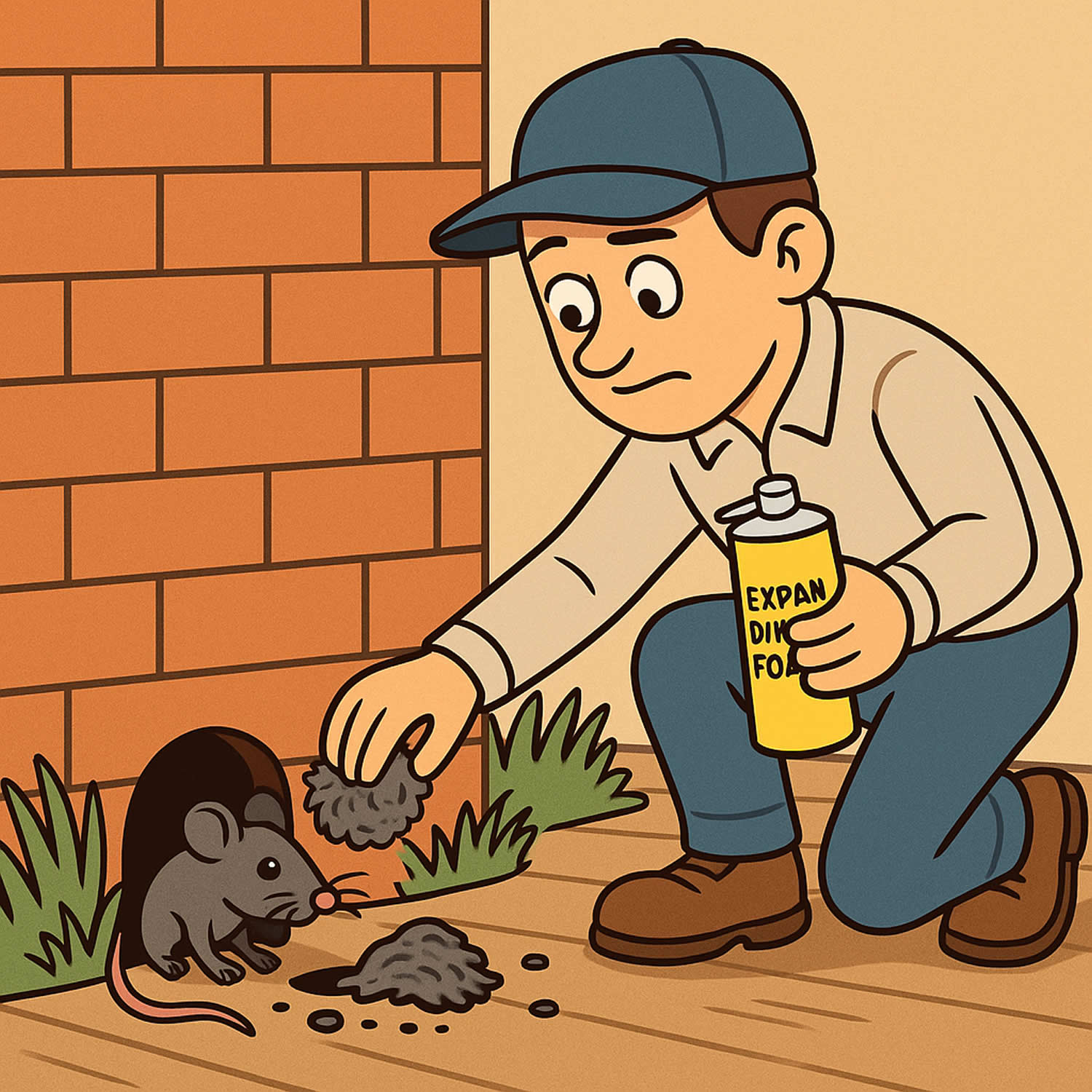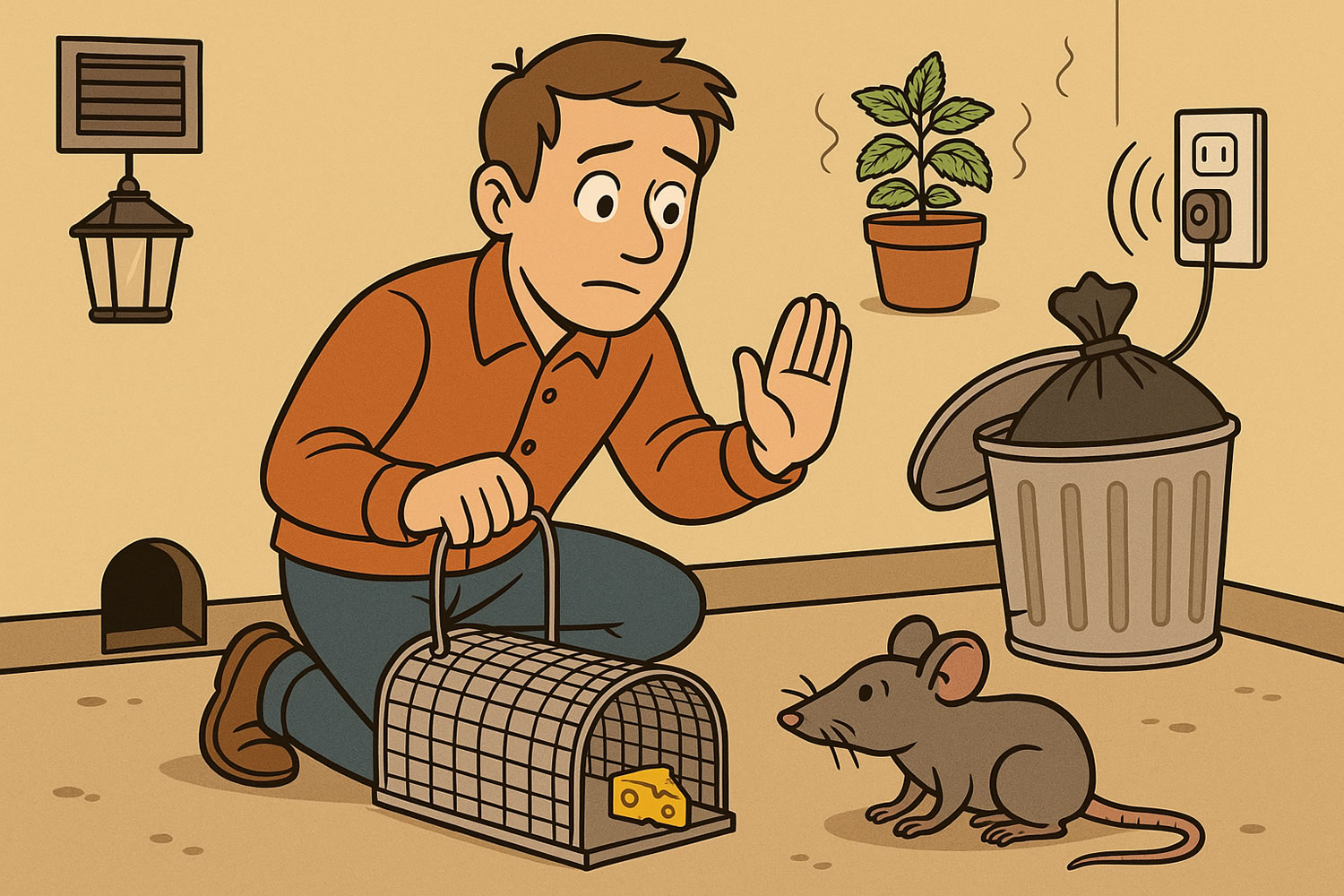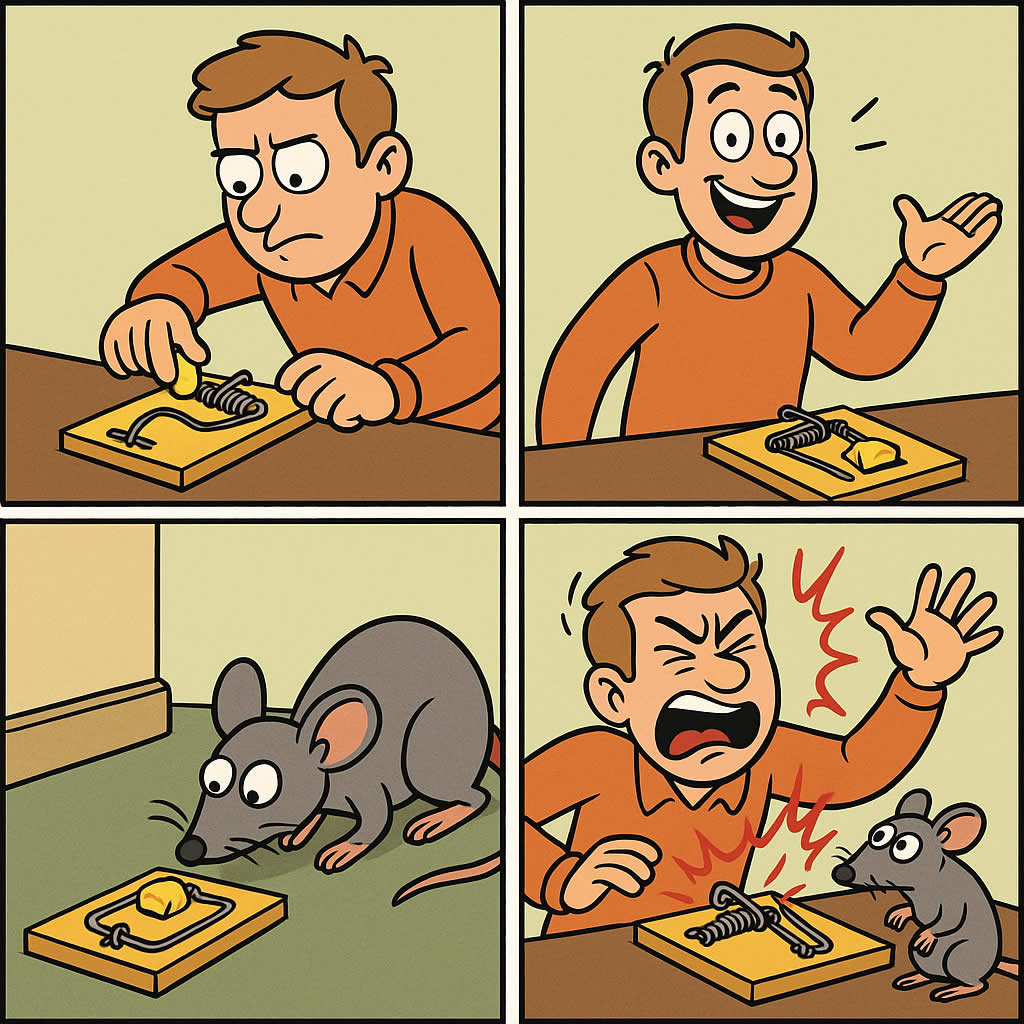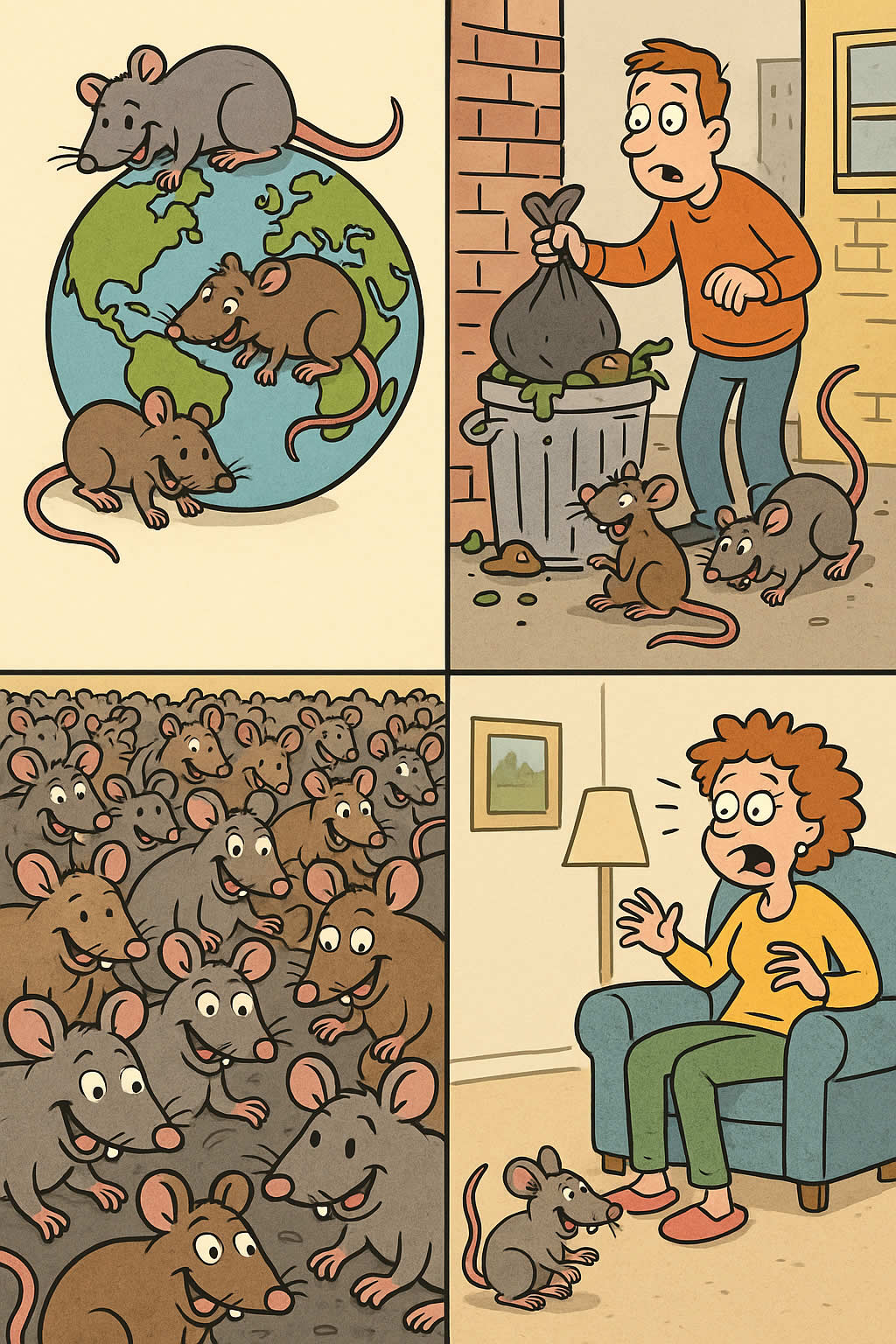Related Queries
ToggleIf you’ve found signs of rats in your garage, you’re probably wondering how they got in, why they’re there, and what you need to do to get rid of them. It might be a couple of droppings, a chewed box, or strange scratching sounds late at night — but whatever the sign, one thing’s clear: you want them gone.
Rats don’t turn up for no reason. They’ve found shelter, food, or warmth — and if you don’t sort it out, they’ll stay. They might even breed. So the sooner you act, the better.
Let’s take it step by step and go over what you need to do.
Why are there rats in my garage?
Your garage might feel like just a place for tools and boxes, but to a rat, it’s full of opportunity. There’s shelter from the cold, space to hide, and often bits of food or rubbish that get left behind. If your garage is attached to your house, that’s even better for them — it’s warm, quiet, and they’re not disturbed much.
Rats often look for spaces with:
- Somewhere dry and hidden
- A way in and out
- Something to eat or gnaw on
Even if you’re not storing food, rats can chew through packaging, wires, or old furniture. And once they’re in, they’ll keep coming back — unless you make it harder for them to survive.
How can I tell if I’ve got rats in the garage?
You might not see one right away. Rats are shy and usually move at night. But you can spot the signs they leave behind.
Have a look around the edges of the garage, behind boxes or shelves, and near the corners. You’re looking for:
- Small black droppings, often grouped together
- Gnawed materials like wood, plastic, or even rubber
- Greasy smears or marks along the wall (from their fur)
- Shredded paper or fabric in quiet spots — they use this to build nests
- Sounds at night — scratching, squeaking, or scurrying
You might also spot a trail where they run often. That’s usually along the walls or behind stacked items. If you find any of these, don’t wait too long to act.
How do I find where the rats are getting in?
Rats need only a small opening — even a 2 cm gap is enough. So you’ll want to check around the garage door, along the floor edges, and behind anything that connects to the outside (like pipes or air vents).
Start outside and walk the perimeter. Look for:
- Cracks or holes in the walls
- Gaps around pipes or wiring
- Broken air bricks or old vents
- Gaps under the garage door
Then check the inside. Shine a torch into the corners. If you see light coming in from outside through a crack, a rat can get in.
Keep in mind, rats can climb. So if you’ve got shelves stacked up high or access points near the roof line, don’t rule them out.
What should I do first to stop the rats?
The first thing you should do is remove whatever’s keeping them there. Rats stay where they feel safe and fed. So, before you worry about traps or poison, take a good look at what might be drawing them in.
Here’s what you can do:
- Clear out old boxes, bags, or stored rubbish
- Seal up food in strong, airtight containers (not cardboard or plastic bags)
- Move anything soft that could be used for nesting
- Tidy up the floor and sweep often to remove crumbs or debris
Even pet food or bird seed left in a corner can attract rats. And once they find it, they’ll keep coming back.
The less shelter and food you leave lying around, the harder it is for them to settle in.
How do I block the rats from getting back in?
Once you’ve cleared the space, you’ll want to stop them getting in again. This part’s just as important as getting rid of the ones already inside.
Start by sealing up any gaps you found earlier. But use the right materials. Rats can chew through foam, plastic, and even wood. So aim for:
- Metal mesh or plates to cover vents
- Cement or wire wool for holes in the wall
- Rubber seals for garage doors
- Steel wool combined with sealant for small gaps
Make sure the garage door closes tightly and doesn’t leave a gap at the bottom. If it does, you can fit a bristle strip or rubber seal to block it.
The idea is to cut off access completely. If they can’t get in, they can’t cause trouble.
What’s the best way to get rid of the rats already in the garage?
Once you’ve made the garage less inviting and blocked the entry points, you’ll need to deal with the rats already inside. There are a few options here.
Snap traps
Still one of the most effective methods. They’re fast, straightforward, and when placed right, they work well. You’ll need to bait them — peanut butter, dried fruit, or oats work — and place them along the walls where rats move.
Place the trap with the bait side against the wall, so the rat has to pass over it. Don’t put traps in open spaces — rats don’t like crossing open areas.
Enclosed bait stations
If you prefer something less visible (or you’ve got pets around), bait stations can help. They keep the bait enclosed but let rats in. Just make sure to check and replace the bait regularly. And handle the station with gloves — rats are sensitive to smell.
Electronic traps
These kill instantly with a quick shock. Some people prefer these as they’re reusable and hygienic, but they’re more expensive upfront.
Live traps
You can use live traps to catch rats without harming them, but releasing them is a challenge. You can’t release them close to home, and in many areas, there are rules about where you can let them go.
Whatever method you use, check traps daily and handle them safely. Wear gloves and dispose of any rats in sealed bags.
Should I use poison?
Rodent poison can work, but it comes with risks. If you’ve got pets, children, or food stored in the garage, you’ll need to be very careful. Poisoned rats can also die in places you can’t reach — behind a wall or under a floor — and the smell is hard to get rid of.
If you do use poison, follow the instructions exactly and place it in proper bait boxes. Never leave loose bait out. And always monitor the situation. If things don’t improve, bring in a professional.
What if the rats keep coming back?
If you’re doing everything right but the rats keep showing up, there’s a chance they’re coming from a nearby source — a neighbour’s garden, a bin area, or an overgrown part of the property.
In that case, you’ll want to:
- Check fences and boundaries for gaps or holes
- Keep your bins sealed and away from the garage
- Cut back vegetation or overgrowth near the walls
- Let neighbours know — they might have the same issue
Sometimes, long-term issues need more than a one-off clean-up. If you’ve tried everything and it’s not working, it might be time to get professional help.
When should I call in a pest controller?
You don’t always need a professional. But if:
- You’ve tried rat traps and the rats are still there
- You hear more activity than before
- There’s damage or signs in new areas
- You can’t find where they’re getting in
…it’s worth calling someone in. A pest controller can inspect the whole property, spot things you might miss, and set up a proper plan. They’ll also help with prevention, not just removal.
The cost might seem like a lot upfront, but in the long run, it could save your garage (and your nerves).
How can I stop this from happening again?
Once the rats are gone, keep your garage clear, sealed, and monitored. You don’t need to turn it into a fortress — but small habits make a big difference.
- Check corners and walls every couple of weeks
- Keep food in sealed containers, or better yet, out of the garage
- Fix cracks or holes as soon as you spot them
- Sweep and tidy the space regularly
- Store items off the floor where you can
If you stay consistent, you’ll be less likely to face another rat problem — and more likely to spot it early if you do.
Final thought
Controlling rats in your garage takes time, but it’s not impossible. You start by making the space less welcoming — cleaner, sealed, and organised. You find the entry points and block them off. Then you deal with any rats still inside, using traps or bait carefully.
It’s not always about acting fast. It’s about acting right — and sticking with it. Once the rats are out, you stay on top of it. And your garage stays yours — not theirs.
Pest Control Southill – Pest Control Tingrith – Pest Control Upper Sundon
